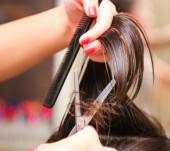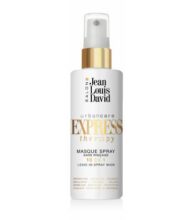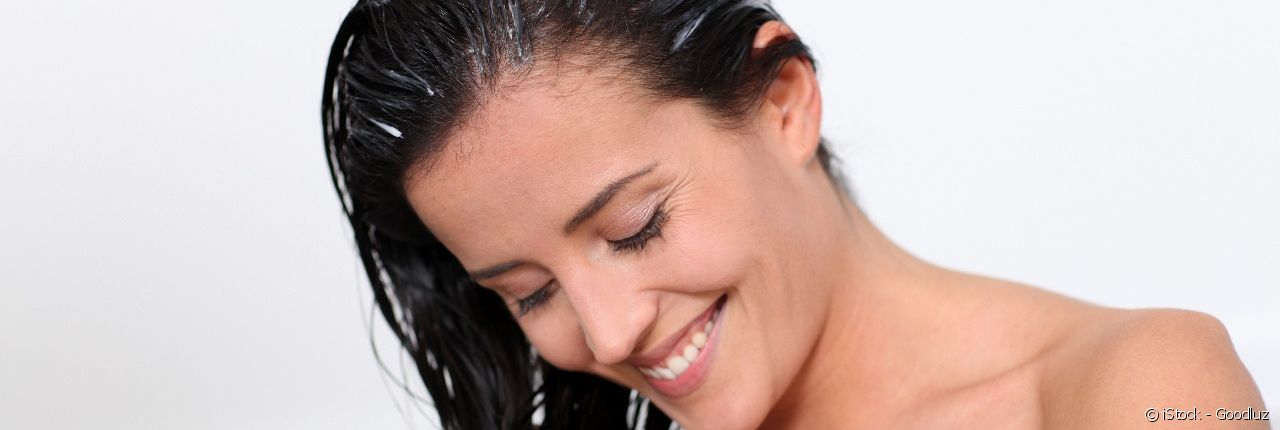
Conditioner and masks: when to start using them and which one to go for?
Both of these products are applied after shampooing to finish off your hair regime. Read on to learn how to differentiate between them and find out which treatments you should use according to your needs.
Just washing your hair with shampoo isn’t enough to protect or repair it from external damaging factors (heated appliances, colouring treatments…). Additional treatments are required to pamper the hair fibre.
Conditioner: for getting rid of knots
The main purpose of conditioner is to soften your hair to facilitate detangling. You start using it from childhood to prevent knots from forming. Apply it as soon as your hair gets tangled, or after each shampoo wash if required. With extremely short haircuts, however, it is not that useful. Yet, it is perfect for maintaining your hair if it is natural and in good health. By placing a protective layer over the hair fibre, conditioner makes your hair softer and shinier.
Masks: for deeply repairing
Unlike conditioner which acts superficially, masks deeply restructure the hair fibre. Only for adult use as they are too rich for children’s fine and fragile hair, masks particularly suit dehydrated, sensitised or damaged locks. They are for use once a week or only once a month depending on your hair’s condition. Space out how often you use them to repair your locks.
An exceptional duo
It is best to alternate between using a conditioner and masks to avoid the risk of weighing down your hair with excess treatment. Combining both treatments is possible to regenerate distressed locks, damaged by colouring treatments and heated devices.
Treatments adapted to suit every need
Whichever product you use, conditioner always promises to get rid of knots without fail! Ideally, opt for a treatment suited to your hair type, in the same range as the shampoo you usually use. However, be highly selective with the mask. This intensive treatment should be selected according to the nature of your hair. To repair damaged locks, opt for a mask rich in shea which is extremely nourishing. If your roots are quick to go greasy, go for a mask containing green clay which treats excess sebum. For coloured hair, opt for a specific formula to preserve your hair colour’s pigments and to boost your locks’ shine. Finally, if you are short on time and find it difficult to respect the application times, opt for an express mask.
You would also like...
-
 Hair care
Pre-summer sun hair care programme
There are many factors that can cause damage to your hair: the sun, the sea, the wind, pollution, chlorine… And in the summer, the majority of these elements are acting at once. Good hair care…
Hair care
Pre-summer sun hair care programme
There are many factors that can cause damage to your hair: the sun, the sea, the wind, pollution, chlorine… And in the summer, the majority of these elements are acting at once. Good hair care… -
 Hair care
Protect your hair from chlorine
Not all hair reacts in the same way to everyday stresses, but if there is one thing that isn’t at all beneficial for any hair type, it’s chlorine; although the effects differ from person to…
Hair care
Protect your hair from chlorine
Not all hair reacts in the same way to everyday stresses, but if there is one thing that isn’t at all beneficial for any hair type, it’s chlorine; although the effects differ from person to… -
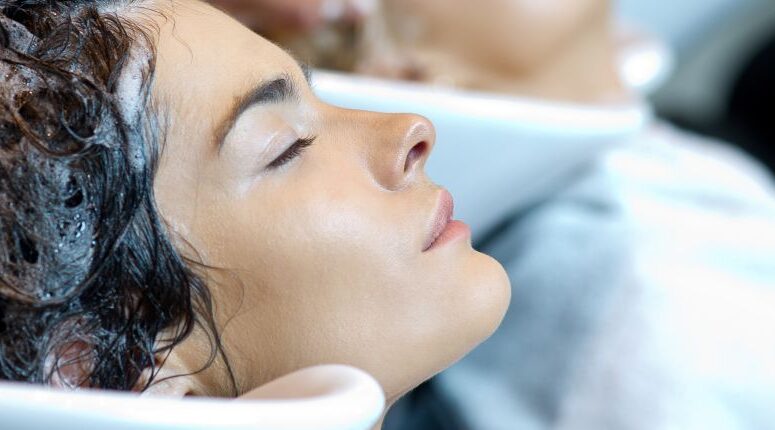 Hair care
Massaging your scalp correctly
Massaging the scalp has many more important effects than you would imagine. As well as the relaxation benefits that it brings, scalp massage can also do your hair the world of good. So there’s no…
Hair care
Massaging your scalp correctly
Massaging the scalp has many more important effects than you would imagine. As well as the relaxation benefits that it brings, scalp massage can also do your hair the world of good. So there’s no… -
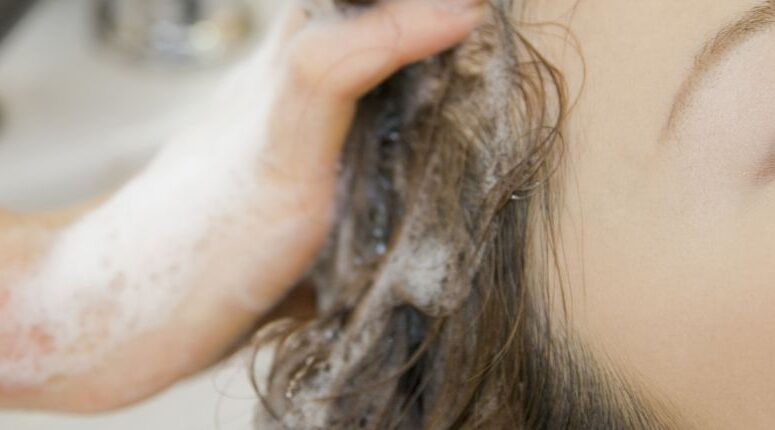 Hair care
Co-washing, the solution for dry hair?
No, co-washing is not just another way of saying “2 in 1”, or a method of applying shampoo and conditioner at the same time. In fact, this term doesn’t mean at all what you think…
Hair care
Co-washing, the solution for dry hair?
No, co-washing is not just another way of saying “2 in 1”, or a method of applying shampoo and conditioner at the same time. In fact, this term doesn’t mean at all what you think…
Not to be missed
-
 Hair care New: Urban Style Perfect Liss
Hair care New: Urban Style Perfect Liss -
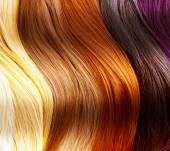 Hair care Only the Best for My Coloured Hair
Hair care Only the Best for My Coloured Hair -
 Hair care Say goodbye to greasy hair
Hair care Say goodbye to greasy hair -


 France
France
 Spain
Spain
 Italy
Italy
 Polska
Polska
 Portugal
Portugal
 Mexico
Mexico
![[EN] Jean Louis David [EN] Jean Louis David](https://www.jeanlouisdavid.us/app/themes/jld/dist/images/svg/logo-jean-louis-david.svg)




